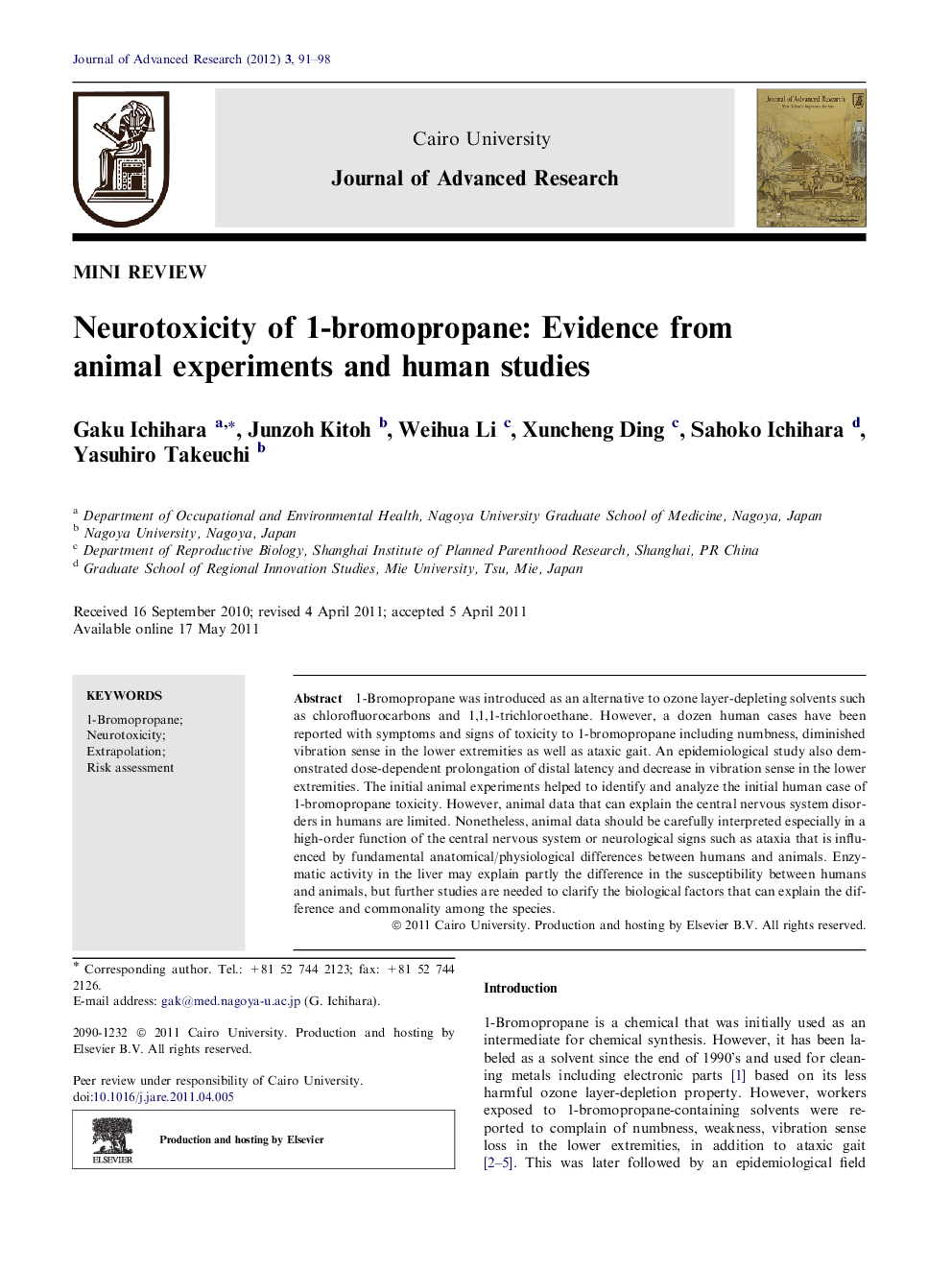| Article ID | Journal | Published Year | Pages | File Type |
|---|---|---|---|---|
| 826473 | Journal of Advanced Research | 2012 | 8 Pages |
1-Bromopropane was introduced as an alternative to ozone layer-depleting solvents such as chlorofluorocarbons and 1,1,1-trichloroethane. However, a dozen human cases have been reported with symptoms and signs of toxicity to 1-bromopropane including numbness, diminished vibration sense in the lower extremities as well as ataxic gait. An epidemiological study also demonstrated dose-dependent prolongation of distal latency and decrease in vibration sense in the lower extremities. The initial animal experiments helped to identify and analyze the initial human case of 1-bromopropane toxicity. However, animal data that can explain the central nervous system disorders in humans are limited. Nonetheless, animal data should be carefully interpreted especially in a high-order function of the central nervous system or neurological signs such as ataxia that is influenced by fundamental anatomical/physiological differences between humans and animals. Enzymatic activity in the liver may explain partly the difference in the susceptibility between humans and animals, but further studies are needed to clarify the biological factors that can explain the difference and commonality among the species.
